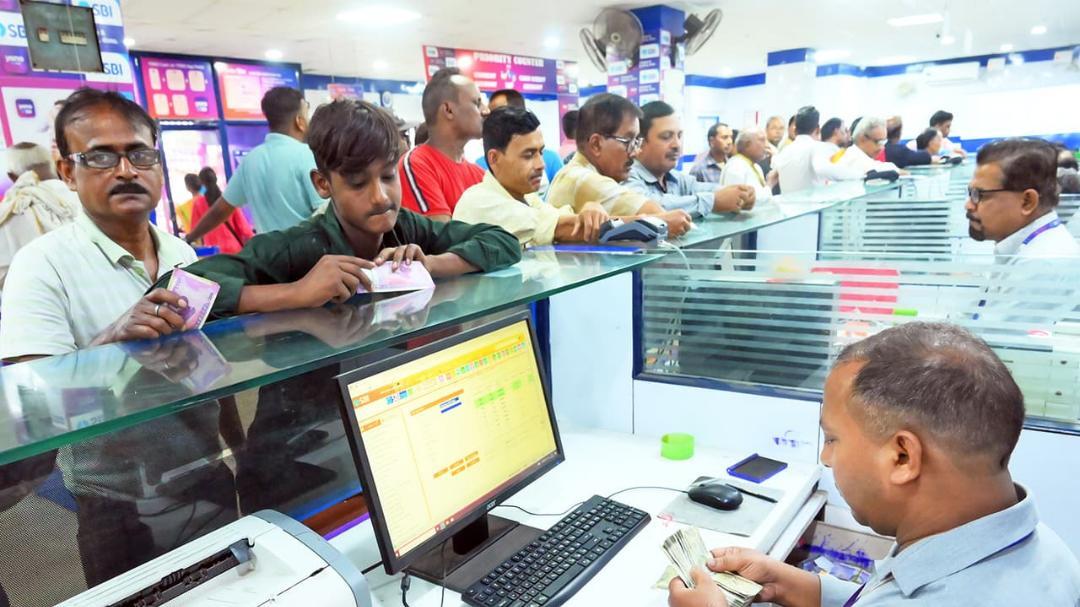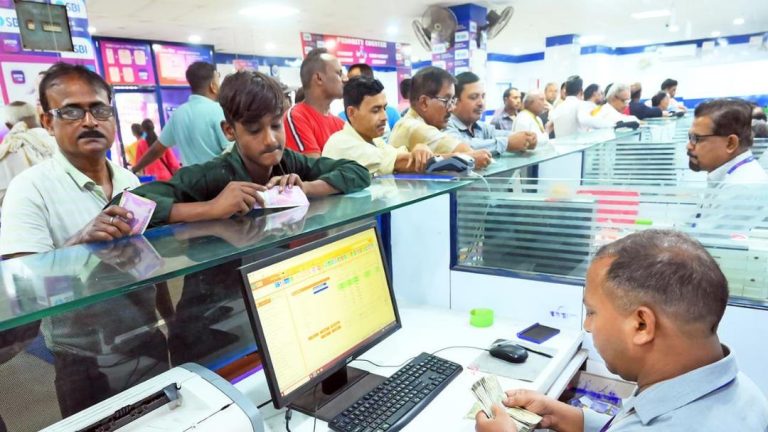
RBI’s Government Securities Holdings Jump to 14.2%: SBI Report
The Reserve Bank of India’s (RBI) share in government securities has witnessed a significant surge, reaching 14.2% in June 2025, up from 11.9% last year, according to a recent report by the State Bank of India (SBI). This substantial increase in the central bank’s holdings of government securities has sparked interest among market observers, who are keen to understand the implications of this development on the overall bond market and the economy.
The SBI report highlights that banks have reduced their exposure to government securities, while insurance companies have maintained a stable holding pattern. This shift in the ownership pattern of government securities is likely to have a bearing on the bond market, particularly with heavy central and state borrowings on the anvil. As a result, bond yields may remain rangebound, as the RBI’s interventions in the foreign exchange market have tightened liquidity, prompting the central bank to undertake fresh Open Market Operations (OMO) to inject liquidity into the system.
The RBI’s increased holdings of government securities can be attributed to its efforts to manage liquidity and stabilize the bond market. The central bank has been actively involved in buying and selling government securities through OMOs to regulate the money supply and maintain financial stability. The recent surge in the RBI’s holdings of government securities suggests that the central bank is taking a more proactive approach to manage the bond market and ensure that the government’s borrowing program is executed smoothly.
The reduction in banks’ exposure to government securities is a notable trend, as it may indicate a shift in their investment strategies. Banks may be opting for other investment avenues, such as loans or private sector debt, in pursuit of higher yields. This could have implications for the credit market, as banks may become more selective in their lending practices, potentially leading to tighter credit conditions for certain sectors or borrowers.
On the other hand, insurance companies have maintained a stable holding pattern, which suggests that they continue to view government securities as a attractive investment option. Insurance companies typically have a long-term investment horizon and seek to park their funds in safe-haven assets, such as government securities, to generate stable returns.
The upcoming heavy central and state borrowings are likely to put pressure on the bond market, as the government seeks to raise funds to finance its expenditure programs. The RBI’s increased holdings of government securities may help to absorb some of this borrowing, but it is unlikely to be sufficient to meet the entire demand. As a result, bond yields may remain rangebound, as the market adjusts to the increased supply of government securities.
The RBI’s forex interventions have also played a role in tightening liquidity, as the central bank has been selling dollars to stem the appreciation of the rupee. This has led to a reduction in the money supply, prompting the RBI to undertake fresh OMOs to inject liquidity into the system. The combination of these factors is likely to keep bond yields rangebound, as the market navigates the complex interplay between liquidity, borrowing, and monetary policy.
In conclusion, the RBI’s increased holdings of government securities, as reported by the SBI, highlights the central bank’s efforts to manage the bond market and stabilize the financial system. The reduction in banks’ exposure to government securities and the stable holding pattern of insurance companies are notable trends that may have implications for the credit market and the overall economy. As the government prepares to undertake heavy borrowings, the RBI’s actions will be closely watched, as the central bank seeks to balance the need to support the government’s borrowing program with the need to maintain financial stability.
The bond market is likely to remain rangebound, as the market adjusts to the increased supply of government securities and the RBI’s interventions in the foreign exchange market. The upcoming borrowings by the central and state governments will be a key factor to watch, as they may put pressure on the bond market and prompt the RBI to undertake further OMOs to inject liquidity into the system.
As the Indian economy continues to evolve, the RBI’s role in managing the bond market and maintaining financial stability will remain crucial. The central bank’s actions will be closely watched by market participants, as they seek to navigate the complex interplay between monetary policy, liquidity, and borrowing.





